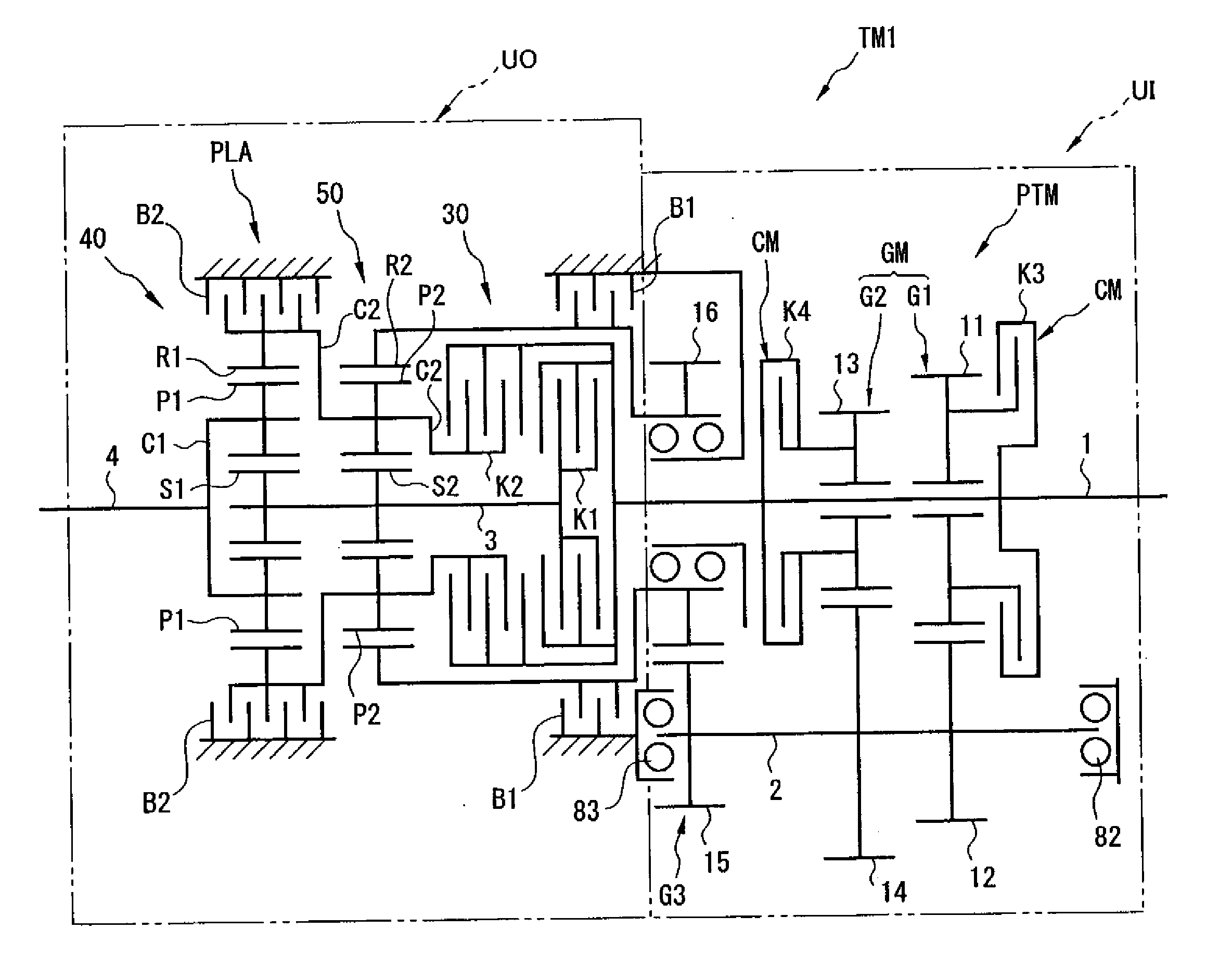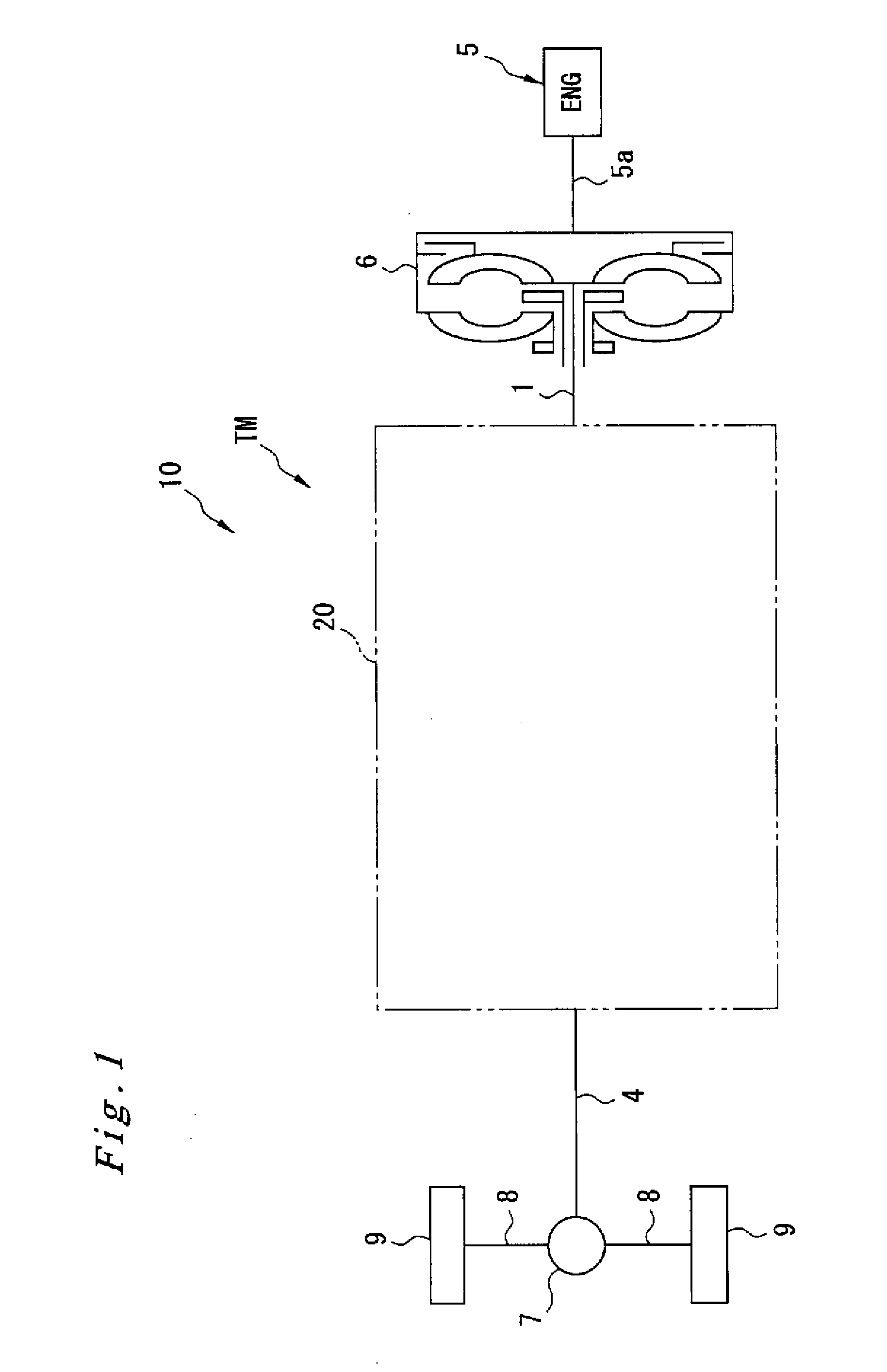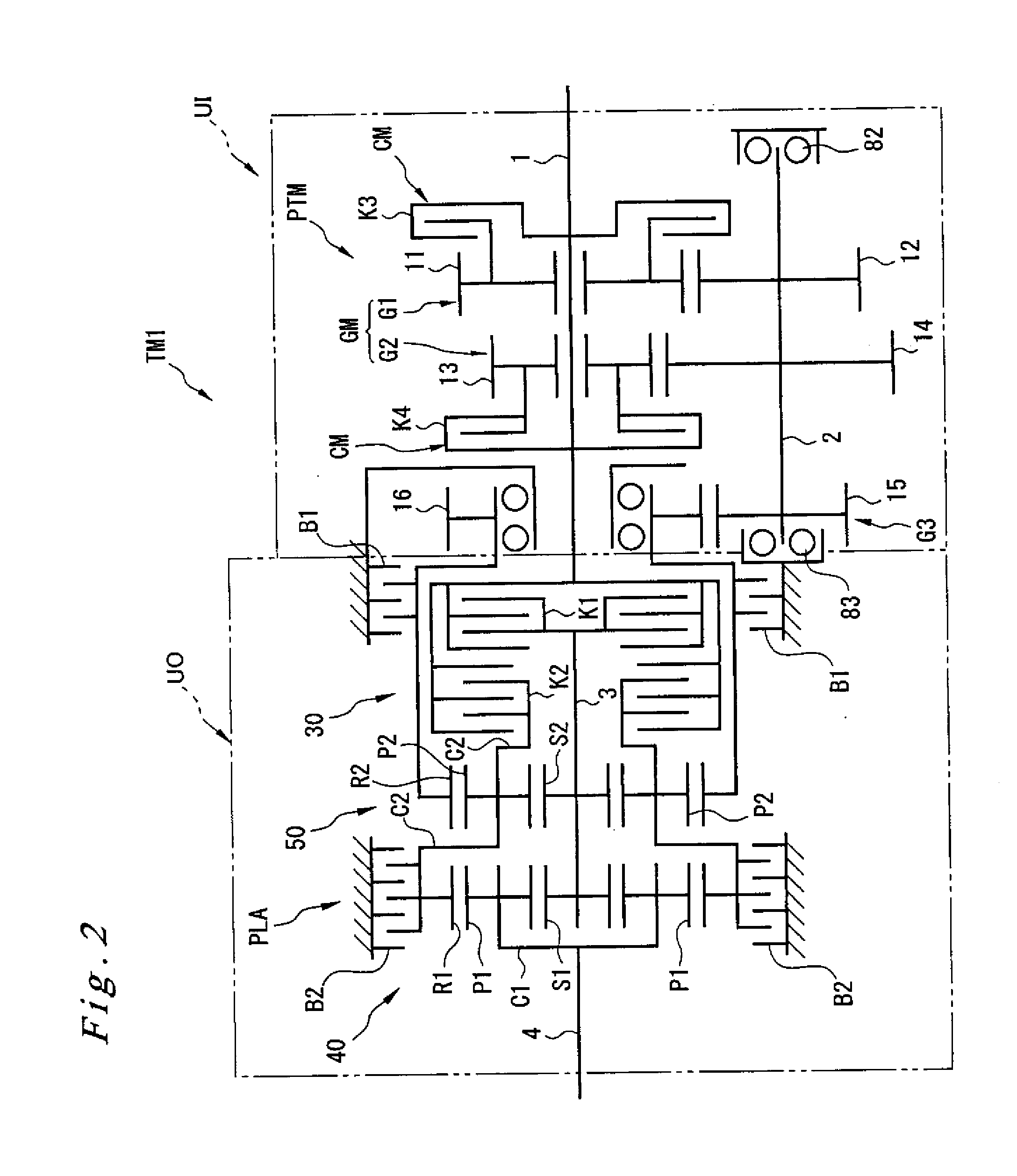Transmission
a technology of transmission and transmission body, applied in the field of transmission, can solve the problems of increasing manufacturing cost, increasing transmission weight, increasing transmission structure, etc., and achieve the effect of facilitating change and minimizing manufacturing cos
- Summary
- Abstract
- Description
- Claims
- Application Information
AI Technical Summary
Benefits of technology
Problems solved by technology
Method used
Image
Examples
embodiment 1
[0035]The following is an explanation of an automatic transmission TM1 according to the first embodiment, with reference to FIGS. 2 and 3.
[0036]As shown in FIG. 2, the automatic transmission TM1 according to the first embodiment includes a parallel shaft type transmission PTM, a compound planet gear train PLA, and planet gear engaging elements 30.
[0037]The input shaft 1 is provided extending from the upstream side to the downstream side within the casing 20, and is rotatably supported on the upstream side by a bearing that is not shown on the drawings. A counter shaft 2 is provided within the casing 20 extending parallel to the input shaft 1. The counter shaft 2 is rotatably supported on the upstream side by a bearing 82, and on the downstream side by a bearing 83. The counter shaft 2 is disposed below the input shaft 1 within the internal space of the casing 20. A center shaft 3 is provided to the downstream side of the input shaft 1 and extends on the same axis as the input shaft ...
embodiment 2
[0063]Next, an automatic transmission TM2 according to a second embodiment is explained with reference to FIGS. 4 and 5. Here, the explanation concentrates on the parts of the structure and function that differ from the automatic transmission TM1 according to the first embodiment. As shown in FIG. 4, the automatic transmission TM2 according to the second embodiment includes a parallel shaft type transmission PTM, a compound type planet gear train PLA, and planet gear engaging elements 30, the same as for the automatic transmission TM1 according to the first embodiment. The compound type planet gear train PLA, and the planet gear engaging elements 30 in the automatic transmission TM2 are the same as for the automatic transmission TM1 according to the first embodiment described above. However, the structure of the parallel shaft type transmission PTM is different.
[0064]As shown in FIG. 4, the parallel shaft type transmission PTM includes an input shaft side gear train GM that includes...
embodiment 3
[0074]Next, an automatic transmission TM3 according to a third embodiment is explained with reference to FIGS. 6 and 7. Here, the explanation concentrates on the parts of the structure and function that differ from the automatic transmission TM1 according to the first embodiment. As shown in FIG. 6, the automatic transmission TM3 according to the third embodiment includes a parallel shaft type transmission PTM, a compound planet gear train PLA, and planet gear engaging elements 30, the same as for the automatic transmission TM1 according to the first embodiment.
[0075]The compound type planet gear train PLA, and the planet gear engaging elements 30 in the automatic transmission TM3 are the same as for the automatic transmission TM1 according to the first embodiment described above, but the structure of the parallel shaft type transmission PTM is different.
[0076]As shown in FIG. 6, the parallel shaft type transmission PTM includes an input shaft side gear train GM that includes a firs...
PUM
 Login to View More
Login to View More Abstract
Description
Claims
Application Information
 Login to View More
Login to View More - R&D
- Intellectual Property
- Life Sciences
- Materials
- Tech Scout
- Unparalleled Data Quality
- Higher Quality Content
- 60% Fewer Hallucinations
Browse by: Latest US Patents, China's latest patents, Technical Efficacy Thesaurus, Application Domain, Technology Topic, Popular Technical Reports.
© 2025 PatSnap. All rights reserved.Legal|Privacy policy|Modern Slavery Act Transparency Statement|Sitemap|About US| Contact US: help@patsnap.com



